Topics

Small Business Fraud When you hear the word “fraud” it’s unlikely that small business fraud comes to mind. However, in terms of potential losses, business identity theft could be considered as big if not a larger threat than consumer identity theft. Just like consumers, businesses face a broad- range of first- and third-party fraud behaviors, varying significantly in frequency, severity and complexity. Small businesses are especially vulnerable, because they typically do not have the layers of security and oversight, an alert accounting or I.T. department, or the sophisticated security technology that larger businesses may have. Over $8 billion is lost or stolen from small businesses each year and 60% of businesses who suffer business identity fraud close their doors within one year. A first-party, or victim-less, fraud profile is characterized by having some form of material misrepresentation (for example, manipulation or falsification of business filings and records) by the business owner without that owner’s intent or immediate capacity to pay the loan item. Historically, during periods of economic downturn or misfortune, this type of fraud is more common. This intuitively makes sense — individuals under extreme financial pressure are more likely to resort to desperate measures, such as misstating financial information on an application to obtain credit. Third-party commercial fraud occurs when a third party steals the identification details of a known business or business owner in order to open credit in the business victim’s name. With creditors becoming more stringent with credit-granting policies on new accounts, we’re seeing seasoned fraudsters shift their focus on taking over existing business or business owner identities. The rising trend of commercial fraud is illustrated by several key reasons including: One of the most common reasons for this is that commercial fraud doesn’t receive the same amount of attention as consumer fraud. Thus, it’s become easier for fraudsters to slip under the radar by perpetrating their crimes through the commercial channel. Keep in mind that businesses are often not seen as victims in the same way that consumers are. For example, victimized businesses aren’t afforded the protections that consumers receive under identity theft laws, such as access to credit information. Another factor is that most businesses are eager to open a new account for a business, after all businesses spend more than consumers. In some cases, opening a new business account can be even easier than opening a new consumer account. Business also have higher credit limits and the invoicing and payment terms allows identity thieves the opportunity to receive products and services without early detection. Finally, it is much easier to get information on a business versus a consumer. Unlike the protections provided to consumers to protect their identity, their credit information much of a business’s information is public record. Armed with the just a business name, address and EIN (employer identification number) fraudulent accounts can be opened and the game of theft begins. These factors, coupled with the fact that business-to-business fraud is approximately three-to-ten times more “profitable” per occurrence than consumer fraud, play a role in leading fraudsters increasingly toward commercial fraud. To learn more about how to protect your business view our interactive Fraud e-book.

Understanding and managing first party fraud Background/Definitions Wherever merchants, lenders, service providers, government agencies or other organizations offer goods, services or anything of value to the public, they incur risk. These risks include: Credit risk — Loosely defined, credit risk arises when an individual receives goods/services in exchange for a promise of future repayment. If the individual’s circumstances change in a way that prevents him or her from paying as agreed, the provider may not receive full payment and will incur a loss. Fraud risk — Fraud risk arises when the recipient uses deception to obtain goods/services. The type of deception can involve a wide range of tactics. Many involve receiving the goods/services while attributing the responsibility for repayment to someone else. The biggest difference between credit risk and fraud risk is intent. Credit risk usually involves customers who received the goods/services with intent to repay but simply lack the resources to meet their obligation. Fraud risk starts with the intent to receive the goods/services without the intent to repay. Between credit risk and fraud risk lies a hybrid type of risk we refer to as first-party fraud risk. We call this a hybrid form of risk because it includes elements of both credit and fraud risk. Specifically, first party fraud involves an individual who makes a promise of future repayment in exchange for goods/services without the intent to repay. Challenges of first party fraud First party fraud is particularly troublesome for both administrative and operational reasons. It is important for organizations to separate these two sets of challenges and address them independently. The most common administrative challenge is to align first-party fraud within the organization. This can be harder than it sounds. Depending on the type of organization, fraud and credit risk may be subject to different accounting rules, limitations that govern the data used to address risk, different rules for rejecting a customer or a transaction, and a host of other differences. A critical first step for any organization confronting first-party fraud is to understand the options that govern fraud management versus credit risk management within the business. Once the administrative options are understood, an organization can turn its attention to the operational challenges of first-party fraud. There are two common choices for the operational handling of first-party fraud, and both can be problematic. First party fraud is included with credit risk. Credit risk management tends to emphasize a binary decision where a recipient is either qualified or not qualified to receive the goods/services. This type of decision overlooks the recipient’s intent. Some recipients of goods/services will be qualified with the intent to pay. Qualified individuals with bad intentions will be attracted to the offers extended by these providers. Losses will accelerate, and to make matters worse it will be difficult to later isolate, analyze and manage the first party fraud cases if the only decision criteria captured pertained to credit risk decisions. The end result is high credit losses compounded by the additional first party fraud that is indistinguishable from credit risk. First party fraud is included with other fraud types. Just as it’s not advisable to include first party fraud with credit risk, it’s also not a good idea to include it with other types of fraud. Other types of fraud typically are analyzed, detected and investigated based on the identification of a fraud victim. Finding a person whose identity or credentials were misused is central to managing these other types of fraud. The types of investigation used to detect other fraud types simply don’t work for first-party fraud. First party fraudsters always will provide complete and accurate information, and, upon contact, they’ll confirm that the transaction/purchase is legitimate. The result for the organization will be a distorted view of their fraud losses and misconceptions about the effectiveness of their investigative process. Evaluating the operational challenges within the context of the administrative challenges will help organizations better plan to handle first party fraud. Recommendations Best practices for data and analytics suggest that more granular data and details are better. The same holds true with respect to managing first party fraud. First party fraud is best handled (operationally) by a dedicated team that can be laser-focused on this particular issue and the development of best practices to address it. This approach allows organizations to develop their own (administrative) framework with clear rules to govern the management of the risk and its prevention. This approach also brings more transparency to reporting and management functions. Most important, it helps insulate good customers from the impact of the fraud review process. First-party fraudsters are most successful when they are able to blend in with good customers and perpetrate long-running scams undetected. Separating this risk from existing credit risk and fraud processes is critical. Organizations have to understand that even when credit risk is low, there’s an element of intent that can mean the difference between good customers and severe losses. Read here for more around managing first party fraud risk.

Commerce: A conversation between merchants and consumers Last week I joined Sherri Haymond of MasterCard and Bharathi Ramavarjula of Facebook on a panel moderated by Paul Moreton, for a CapitalOne summit on Payments. When asked what was more important for the future of commerce – Sherri spoke of how security and trust is key, and I talked about how messaging has intersected with payments, (and in Wechat’s case) now intersecting with lending – with Bharathi eloquently summing it up as – “Facebook sees Commerce as a conversation”. If Commerce is a conversation between a merchant and a consumer (however loosely defined those terms have now come to be), then it has become contorted and clustered around payments and point of sale. Till not too long ago, there also existed a high barrier for entry to become a merchant, to accept payments, to promote and sell online, and to find cheap capital for growth. All these things are different now – and unsurprisingly, little of this progress can be attributed to banks or other current payment stakeholders. For example: I didn’t know I could be a merchant till Square showed me how easy it is to accept credit cards, and setup a small business. I didn’t know that I could become a driver in my spare time – till Uber showed me how easy it is to become one. I didn’t know that I could become a landlord till AirBnB showed me how easy it is to find people to rent it to. I know I am oversimplifying. These three and others like them chose to use technology and smartphones to exponentially scale the size of existing two-sided markets as well as create new ones. When another billion people on the planet stand to be connected over the next five years – entirely via cheap smartphones – it is hard to view commerce as a zero sum opportunity. Being wired for commerce may come to mean something entirely different for those billion, and messaging apps and social networks will replace point of sale for discovery, acquisition and engagement. This is why I believe changes in payments today are largely incremental and localized to the developed world. The platform driven efforts – such as tokenization – do go beyond any specific modality (card, mobile, connected things) to further the notion and benefit of trust entirely within the network. But that is as far as it goes. Issuers and networks may have little role to play in discovery, consumer loyalty and now more so than ever – identity. Case in point: Through Relay, Stripe enables a retailer to push a button and start selling through new channels while taking comfort in that his pricing and inventory will remain real-time. Through Messenger and Shopping – Facebook will encapsulate product discovery, guide the intent to purchase, host the informed pre-purchase debate and even payment – flattening it and never letting it out of sight. It is no accident that each of the four horsemen of the Internet has heavily invested in voice assistants – (Apple/Siri, Google/Now, Facebook/M, Amazon/Echo, Microsoft/Cortana) – especially as we confront old habits in interaction design that are failing on mobile, to continue to shorten the distance between intent and action through things like 3D Touch, the Amazon Dash button, and intelligent agents. Everything that is interesting in commerce: product discovery, search, interface and interaction design are all being done – with the sole exception of Amazon – by an entity that is neither a retailer nor a bank. Conversational commerce does not end with payments being swallowed up by messaging apps. It is a pre-requisite, but hardly not even a way point in that journey. Originally posted on: Droplabs.co

Driver of success: Mitigate auto lending risk A culture of learning is a key driver of success. Does your risk culture continue to adapt? There are many issues within auto lending that are unique to other financial services ecosystems: the direct versus indirect relationship, insights of the asset influencing the risk insights, new versus used vehicle transactions influencing risk and terms, and more. However, there is one universal standard common to all financial services cultures — change.. Change is constant, and an institution’s marketing and risk organizations need to be constantly learning to stay abreast of dealer, consumer, competitor and regulatory issues. No one has said it better than Jack Welch: “An organization’s ability to learn, and translate that learning into action rapidly, is the ultimate competitive advantage.” This statement was quickly followed by a command: “Change before you have to.” So the challenge for the portfolio manager is to ensure there are the system features, data sources, management reporting structures, data access features, analytic skills, broad management team skill sets, and employee feedback and incentive plans to drive the organization to a constant state of renewal. The challenge for many smaller and midsize lenders is to determine what systems and skills need to be in-house and what tasks are better left for a third party to handle. For consumer-level data, vehicle history and valuation data, and fraud alert flags, it seems reasonable to leverage solutions from established third parties: credit reporting agencies. After that, the solutions to the many other needs may be more specific to the lender legacy skill set and other support relationships: Are there strong in-house data-management and analytic skills? There is a significant difference between management information and data analysis driving policy and portfolio performance forecasts. Does the internal team have both? Is the current operating platform(s) feature-rich and able to be managed and enhanced by internal resources within tight time frames? Is the management team broadly experienced and constantly updating best-practice insights? Is the in-house team frequently engaged with the regulatory community to stay abreast of new mandates and initiatives? There is a solution. Experian® offers the data, software, solutions, management information, analytic solutions and consulting services to tie everything together for a lender-specific best configuration. We look forward to hearing from you to discuss how we can help.

Key drivers to auto financial services are speed and precision. What model year is your decisioning system? In the auto world the twin engineering goals are performance and durability. Some memorable quotes have been offered about the results of all that complex engineering. And some not so complex observations. The world of racing has offered some best examples of the latter. Here’s a memorable one: “There’s no secret. You just press the accelerator to the floor and steer left. – Bill Vukovich When considering an effective auto financial services relationship one quickly comes to the conclusion that the 2 key drivers of an improved booking rate is the speed of the decision to the consumer/dealer and the precision of that decision – both the ‘yes/no’ and the ‘at what rate’. In the ‘good old days’ a lender relied upon his dealer relationship and a crew of experienced underwriters to quickly respond to a sales opportunities. Well, these days dealers will jump to the service provider that delivers the most happy customers. But, for all too many lenders some automated decisioning is leveraged but it is not uncommon to still see a significantly large ‘grey area’ of decisions that falls to the experienced underwriter. And that service model is a failure of speed and precision. You may make the decision to approve but your competition came in with a better price at the same time. His application got booked. Your decision and the cost incurred was left in the dust – bin. High on the list of solutions to this business issue is an improved use of available data and decisioning solutions. Too many lenders still underutilize available analytics and automated decisions to deliver an improved booking rate. Is your system last year’s model? Does your current underwriting system fully leverage available third party data to reduce delays due to fraud flags. Is your ability to pay component reliant upon a complex application or follow-up requests for additional information to the consumer? Does your management information reporting provide details to the incidence and disposition of all exception processes? Are you able to implement newer analytics and/or policy modifications in hours or days versus sitting in the IT queue for weeks or months? Can you modify policies to align with new dealer demographics and risk factors? The new model is in and Experian® is ready to help you give it a ride. Purchase auto credit data now.

Key drivers to auto financial services are speed and precision. What model year is your decisioning system? In the auto world the twin engineering goals are performance and durability. Some memorable quotes have been offered about the results of all that complex engineering. And some not so complex observations. The world of racing has offered some best examples of the latter. Here’s a memorable one: “There’s no secret. You just press the accelerator to the floor and steer left. – Bill Vukovich When considering an effective auto financial services relationship one quickly comes to the conclusion that the 2 key drivers of an improved booking rate is the speed of the decision to the consumer/dealer and the precision of that decision – both the ‘yes/no’ and the ‘at what rate’. In the ‘good old days’ a lender relied upon his dealer relationship and a crew of experienced underwriters to quickly respond to a sales opportunities. Well, these days dealers will jump to the service provider that delivers the most happy customers. But, for all too many lenders some automated decisioning is leveraged but it is not uncommon to still see a significantly large ‘grey area’ of decisions that falls to the experienced underwriter. And that service model is a failure of speed and precision. You may make the decision to approve but your competition came in with a better price at the same time. His application got booked. Your decision and the cost incurred was left in the dust – bin. High on the list of solutions to this business issue is an improved use of available data and decisioning solutions. Too many lenders still underutilize available analytics and automated decisions to deliver an improved booking rate. Is your system last year’s model? Does your current underwriting system fully leverage available third party data to reduce delays due to fraud flags. Is your ability to pay component reliant upon a complex application or follow-up requests for additional information to the consumer? Does your management information reporting provide details to the incidence and disposition of all exception processes? Are you able to implement newer analytics and/or policy modifications in hours or days versus sitting in the IT queue for weeks or months? Can you modify policies to align with new dealer demographics and risk factors? The new model is in and Experian® is ready to help you give it a ride. Purchase auto credit data now.
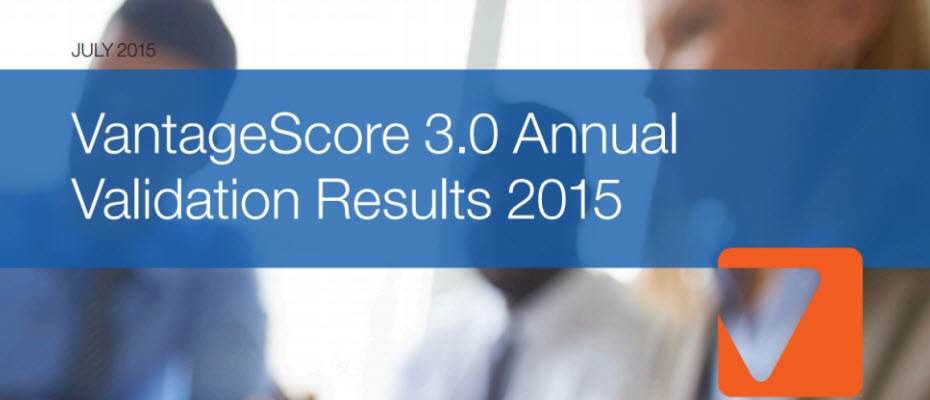
VantageScore® models are the only credit scoring models to employ the same characteristic information and model design across the three credit bureaus.

With the holidays around the corner, retailers are getting ready to release their holiday campaigns.
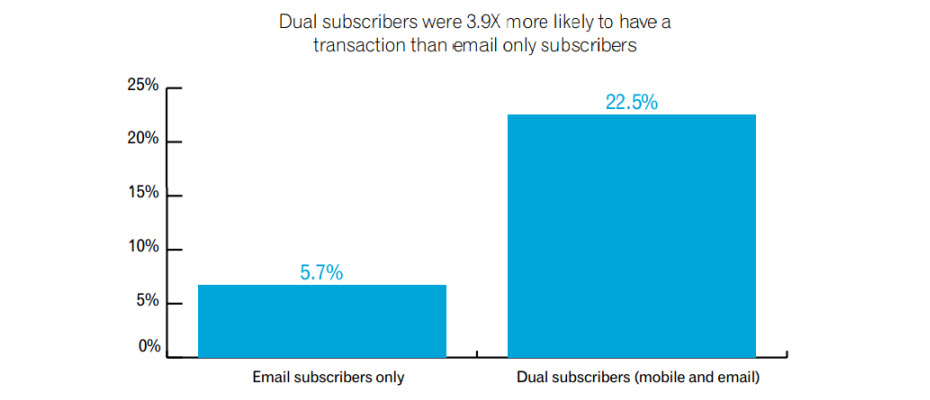
While mobile subscriber lists typically are much smaller than email lists, mobile subscribers tend to be loyal and highly engaged customers.

Driver of success: Mitigate auto lending risk A culture of learning is a key driver of success. Does your risk culture continue to adapt? There are many issues within auto lending that are unique to other financial services ecosystems: the direct versus indirect relationship, insights of the asset influencing the risk insights, new versus used vehicle transactions influencing risk and terms, and more. However, there is one universal standard common to all financial services cultures — change.. Change is constant, and an institution’s marketing and risk organizations need to be constantly learning to stay abreast of dealer, consumer, competitor and regulatory issues. No one has said it better than Jack Welch: “An organization’s ability to learn, and translate that learning into action rapidly, is the ultimate competitive advantage.” This statement was quickly followed by a command: “Change before you have to.” So the challenge for the portfolio manager is to ensure there are the system features, data sources, management reporting structures, data access features, analytic skills, broad management team skill sets, and employee feedback and incentive plans to drive the organization to a constant state of renewal. The challenge for many smaller and midsize lenders is to determine what systems and skills need to be in-house and what tasks are better left for a third party to handle. For consumer-level data, vehicle history and valuation data, and fraud alert flags, it seems reasonable to leverage solutions from established third parties: credit reporting agencies. After that, the solutions to the many other needs may be more specific to the lender legacy skill set and other support relationships: Are there strong in-house data-management and analytic skills? There is a significant difference between management information and data analysis driving policy and portfolio performance forecasts. Does the internal team have both? Is the current operating platform(s) feature-rich and able to be managed and enhanced by internal resources within tight time frames? Is the management team broadly experienced and constantly updating best-practice insights? Is the in-house team frequently engaged with the regulatory community to stay abreast of new mandates and initiatives? There is a solution. Experian® offers the data, software, solutions, management information, analytic solutions and consulting services to tie everything together for a lender-specific best configuration. We look forward to hearing from you to discuss how we can help.
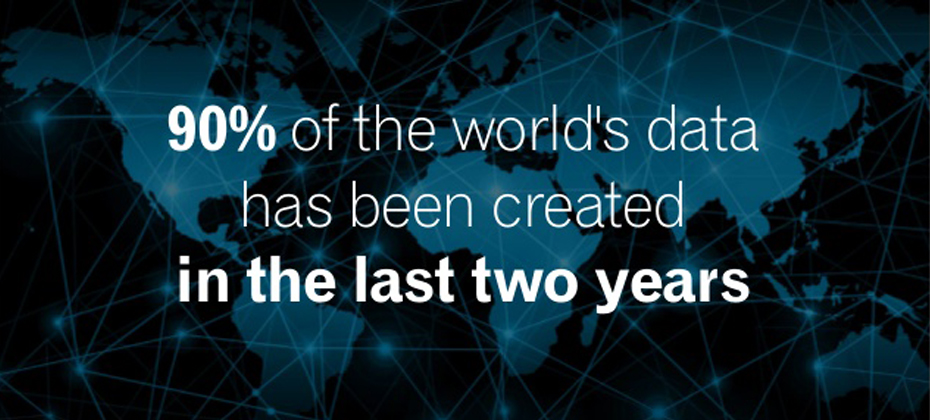
As Big Data becomes the norm in the credit industry and others, the seemingly non-stop efforts to accumulate more and more data leads me to ask the question - when is Big Data too much data? The answer doesn’t lie in the quantity of data itself, but rather in the application of it – Big Data is too much data when you can’t use it to make better decisions. So what do I mean by a better decision? From any number of perspectives, the answer to that question will vary. From the viewpoint of a marketer, maybe that decision is about whether new data will result in better response rates through improved segmentation. From a lender perspective, that decision might be about whether a borrower will repay a loan or the right interest rate to charge the borrower. That is one the points of the hype around Big Data – it is helping companies and individuals in all sorts of situations make better decisions – but regardless of the application, it appears that the science of Big Data must not just be based on an assumption that more data will always lead to better decisions, but that more data can lead to better decisions – if it is also the “right data”. Then how does one know when another new data source is helping? It’s not obvious that additional data won’t help make a better decision. It takes an expert to understand not only the data employed, but ultimately the use of the data in the decision-making process. It takes expertise that is not found just anywhere. At Experian, one of our core capabilities is based on the ability to distinguish between data that is predictive and can help our clients make better decisions, and that which is noise and is not helpful to our clients. Our scores and models, whether they be used for prospecting new customers, measuring risk in offering new credit, or determining how to best collect on an outstanding receivable, are all designed to optimize the decision making process. Learn more about our big data capabilities
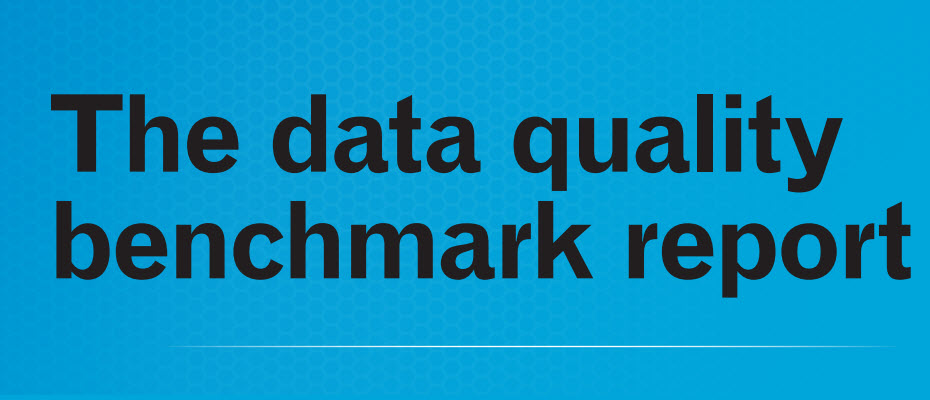
A recent Experian study on data insights found that 83% of chief information officers see data as a valuable asset that is not being fully exploited within their organization, resulting in the need for more organizations to appoint a dedicated chief data officer (CDO).
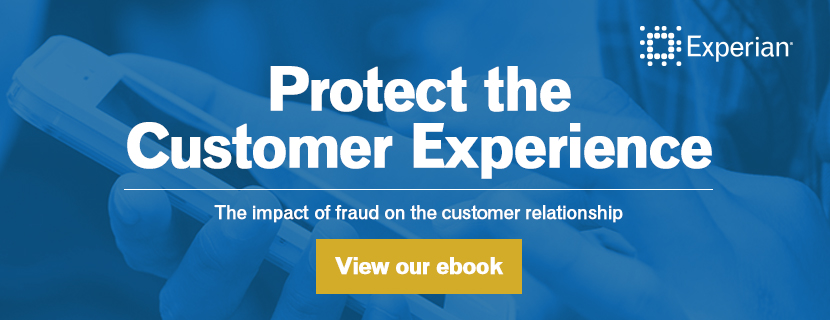
Protecting your customer The impact of fraud on the customer relationship Sadly fraudsters seem to always be one-step ahead of fraud-prevention strategies, causing organizations to play catch-up to the criminals. And as information security tightens and technologies evolve, so does the industrious nature of organized identity and online fraud. It should be no surprise then that fraud risk mitigation and management will continue to be an ongoing issue for organizations. But what continues to drive investment in identity management and online risk tools is the arms race across organizations to deliver superior customer experience and functionality. While the monetary cost of fraud losses can be high and rather detrimental, the impact of lost customers and overall reputational decline due to poor customer experiences can be higher. The key is finding the right balance between identifying and segmenting likely fraudulent customers across the vast majority of legitimate customers and transactions. I want to share a recent interactive eBook we launched which outlines the authentication and identity management balance with a focus on the consumer. We highlight current trends and what organizations should be thinking about and doing to protect their business, institution, or agency and customers. I hope you enjoy this look at the impact of fraud on the customer relationship.
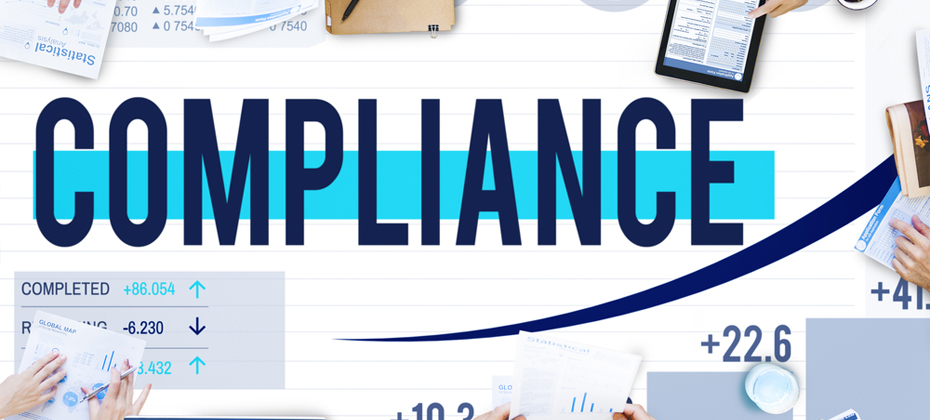
Our clients are facing three primary issues when it comes to regulatory compliance: time resources knowledge Many are facing Matters Requiring Attention (MRA) and Matters Requiring Immediate Attention (MRIA) and don’t have the staff or the capacity to complete all of the work themselves within tight deadlines. They also want their limited resources to work on internal, proprietary initiatives to grow the business and maximize profit and return. These activities cannot be outsourced as easily as regulatory and compliance work, which is relatively easy to parse out and give to an external third party. Quite often, a level of independent oversight and effective challenge is also a requirement that can easily be solved through the use of an objective, external third party. A lot of the regulations are still relatively new, and there are still many issues and knowledge gaps our clients are facing. They have insight into their own organization only and quite often aren’t aware of or able to leverage industry best practice without the view of an external third party with broader industry knowledge and experience. In terms of best practice, it all really starts with the data, leading to the attributes used in models to create sound risk management strategies, manage capital adequacy, and ensure the safety and soundness of the overall U.S. and global financial system. The integrity of data reporting, dispute management and compliance with all applicable regulatory requirements need to be an enterprise-wide effort. In the area of attribute governance, there are three primary areas of focus: Attribution creation — definitions; logic, code and accuracy; and how to reduce implementation timelines. Monitoring and maintenance — looking for shifts in attributes and their potential impact and facilitating updates to attributes based upon changes in reporting and upgrades to newer versions of attributes as the credit environment changes, such as during the most recent mortgage crisis, where loan modification and associated attributes were created and took on increased importance. And last but definitely not least, documentation — We cannot say enough about the importance of documentation, especially to regulators. Documentation ensures accuracy and consistent application and must record all general conventions and limitations. For model risk management and governance, focus areas should follow the expanded Office of the Comptroller of the Currency (OCC) Guidance from Bulletin 2011-12. This guidance includes expanded requirements for model validations including not just standard back testing, but also benchmarking, effective challenge, sensitivity analysis and stress testing. It also expands the guidance beyond just validation to model development and usage, implementation, governance and controls. In response to these OCC expanded guidance requirements, one of our clients was seeking an industry expert to serve as an independent third party to 1) conduct industry best practice and benchmarking in areas of reject inference methodologies and 2) validate production models used for risk underwriting, line assignment, pricing and targeting. After a full review and assessment, we provided the client with a clear road map to improve the process to conduct reject inference through knowledge transfer and best practices. We established a best-in-class approach to annual model validations on a model inventory consisting of retail, small business and wealth segment portfolios. We also delivered expedited results that also identified alternative methods of validation that assess variability in point estimates, as well as comply with OCC requirements for precision, ranking and population measurement statistics. Through our work, the client was able to leverage Experian to establish a global approach to reject inference methodologies, to augment existing staffing and to offshore resources in a cost-effective manner. There are three primary areas of loss forecasting, stress testing and capital adequacy planning: International — Basel accord National — U.S. Dodd-Frank Act Stress Testing (DFAST), including Comprehensive Capital Analysis and Review (CCAR) supervisory review Internal — Allowance for Loan and Lease Losses requirements Although there are similarities, there are also important differences among each of these three requirements and practices. For these reasons, most financial institutions in the United States are still providing and managing them separately. This obviously creates a strain on internal staff and resources. One of our clients had an initial compliance strategy in place but did not have the sufficient in-house staff and resources required to create, document and review its modeling and stress testing to satisfy regulators and internal auditors. The organization needed a consultant that could work closely with its in-house team to support sophisticated models that were tailored to meet its specific compliance obligations. We worked closely with the client’s team to provide extensive consulting support for a complex set of loss-forecasting models and other tools, applying industry best practices to fully document the models. Throughout the process, our consulting team discovered and identified content gaps to help ensure that all documentation was complete. We also provided ad hoc analytics to support the client’s model development effort and strategic and tactical guidance on stress testing model development for compliance. This enabled the client to develop primary and challenge models for DFAST’s CCAR requirements, as well as internal stress scenarios. It also provided the client with the following tangible business benefits: balance compliance with maximum profitability and revenue; provided knowledge sharing and best practices to help empower client employees; helped refine models based on feedback from internal and external governance organizations; supported models with academic research to help align the correct model to the correct processes; and provided assistance with model implementation and application. Click here for a recent video I did on how capital-adequacy positions are becoming crucial in analyst recommendations.

Increased volume of fraud attempts during back to school shopping season Back to school shopping season will be the first time many consumers' use their chip-enabled credit cards and stores' new card readers. With the average K-12 family spending $630.36 per child in back to school shopping, and more than 1/3 shopping online, according to the National Retail Federation - is your fraud strategy prepared to handle the increased volume? And are you using a dynamic knowledge based authentication (KBA) solution that incorporates a wide variety of questions categories as part of your multi-faceted risk based authentication approach to fraud account management? Binary verification, or risk segmentation based on a single pass/fail decision is like trying to stay dry in a summer rain storm by wearing a coat. It’s far more effective to wear rubber boots and a use an umbrella, in addition to wearing a rain coat. Binary verification can occur based on evaluating identity elements with two outcomes –pass or fail – which could leave you susceptible to a crafty fraudster. When we recommend a risk based authentication approach, we take a more holistic view of a consumers risk profile. We advocate using analytics and weighting many factors, including identity elements, device intelligence and a robust knowledge-based authentication solution that work in concert to provide overall risk based decision. After all, the end-goal is to enable the good consumers to continue forward based, while preventing the fraudster from compromising your customer’s identity and infiltrating you’re your business.